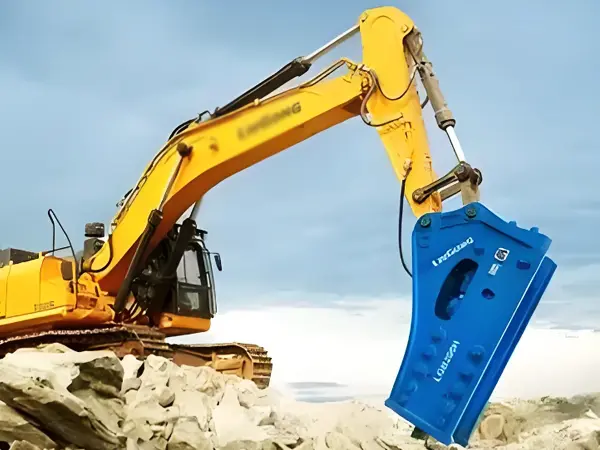Maximizing Efficiency with Hydraulic Diggers in Construction
Release time:
2025-05-15
Hydraulic diggers, also known as hydraulic excavators, are indispensable tools in the construction and manufacturing sectors. These machines leverage hydraulic power to perform various tasks, such as digging, lifting, and grading, making them versatile assets on any job site. Understanding the operational principles, advantages, and maintenance requirements of hydraulic diggers can significantly e
Hydraulic diggers, also known as hydraulic excavators, are indispensable tools in the construction and manufacturing sectors. These machines leverage hydraulic power to perform various tasks, such as digging, lifting, and grading, making them versatile assets on any job site. Understanding the operational principles, advantages, and maintenance requirements of hydraulic diggers can significantly enhance their efficiency and longevity.
At the heart of hydraulic diggers is the hydraulic system, which consists of hydraulic fluid, pumps, and actuators. The hydraulic fluid transmits power through pressurized circuits, allowing the machine's arm and bucket to move with precision and power. This design enables hydraulic diggers to exert significant force while maintaining a relatively compact size, which is particularly beneficial in urban construction environments where space is limited.
One of the main advantages of hydraulic diggers is their versatility. These machines can be equipped with various attachments, such as buckets, augers, and breakers, to perform different tasks. For instance, a hydraulic digger fitted with a bucket can efficiently excavate soil, while an attachment like a breaker is ideal for demolishing concrete structures. This adaptability allows contractors to utilize a single machine for multiple functions, ultimately reducing equipment costs and saving time on the job.
Moreover, the precision control offered by hydraulic systems allows operators to execute complex tasks with ease. This level of control minimizes the risk of damage to surrounding structures and ensures that work is completed efficiently. Additionally, hydraulic diggers are designed with stability in mind, featuring tracks or wheels that enhance their balance during operation, even on uneven terrain.
Maintenance is crucial to ensure the optimal performance of hydraulic diggers. Regularly checking hydraulic fluid levels, inspecting hoses for leaks, and ensuring that all moving parts are lubricated can prevent breakdowns and extend the machine's lifespan. Operators should also be trained to recognize signs of wear or malfunction, allowing for timely repairs before minor issues become major problems.
In conclusion, hydraulic diggers play a vital role in the manufacturing and construction industries, offering unmatched power, versatility, and precision. By understanding their operational characteristics and adhering to proper maintenance practices, companies can maximize the efficiency of these machines. As technology continues to evolve, staying updated on advancements in hydraulic digger design and functionality will further enhance their effectiveness on job sites, leading to successful project completions and higher productivity levels.
At the heart of hydraulic diggers is the hydraulic system, which consists of hydraulic fluid, pumps, and actuators. The hydraulic fluid transmits power through pressurized circuits, allowing the machine's arm and bucket to move with precision and power. This design enables hydraulic diggers to exert significant force while maintaining a relatively compact size, which is particularly beneficial in urban construction environments where space is limited.
One of the main advantages of hydraulic diggers is their versatility. These machines can be equipped with various attachments, such as buckets, augers, and breakers, to perform different tasks. For instance, a hydraulic digger fitted with a bucket can efficiently excavate soil, while an attachment like a breaker is ideal for demolishing concrete structures. This adaptability allows contractors to utilize a single machine for multiple functions, ultimately reducing equipment costs and saving time on the job.
Moreover, the precision control offered by hydraulic systems allows operators to execute complex tasks with ease. This level of control minimizes the risk of damage to surrounding structures and ensures that work is completed efficiently. Additionally, hydraulic diggers are designed with stability in mind, featuring tracks or wheels that enhance their balance during operation, even on uneven terrain.
Maintenance is crucial to ensure the optimal performance of hydraulic diggers. Regularly checking hydraulic fluid levels, inspecting hoses for leaks, and ensuring that all moving parts are lubricated can prevent breakdowns and extend the machine's lifespan. Operators should also be trained to recognize signs of wear or malfunction, allowing for timely repairs before minor issues become major problems.
In conclusion, hydraulic diggers play a vital role in the manufacturing and construction industries, offering unmatched power, versatility, and precision. By understanding their operational characteristics and adhering to proper maintenance practices, companies can maximize the efficiency of these machines. As technology continues to evolve, staying updated on advancements in hydraulic digger design and functionality will further enhance their effectiveness on job sites, leading to successful project completions and higher productivity levels.





